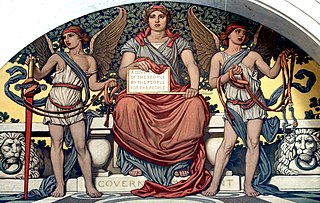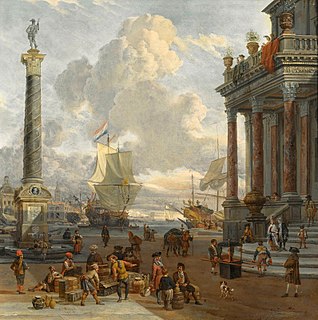 W
WThe one hundred new shekel note (₪100) is a banknote of the Israeli new shekel, It was first issued in Series A 1986, with the Series B in 1999 and Series C in 2017.
 W
WBills of credit are documents similar to banknotes issued by a government that represent a government's indebtedness to the holder. They are typically designed to circulate as currency or currency substitutes. Bills of credit are mentioned in Article One, Section 10, Clause One of the United States Constitution, where their issuance by state governments is prohibited.
 W
WBimetallism is a monetary standard in which the value of the monetary unit is defined as equivalent to certain quantities of two metals, typically gold and silver, creating a fixed rate of exchange between them.
 W
WBitcoin Gold (BTG) is a cryptocurrency. It is a hard fork of Bitcoin, the open source cryptocurrency. It is an open source, decentralized digital currency without a central bank or intermediary that can be sent from user to user on the peer-to-peer Bitcoin Gold network.
 W
WA currency board is a monetary authority which is required to maintain a fixed exchange rate with a foreign currency. This policy objective requires the conventional objectives of a central bank to be subordinated to the exchange rate target.
 W
WA change machine is a vending machine that accepts large denominations of currency and returns an equal amount of currency in smaller bills or coins. Typically these machines are used to provide coins in exchange for paper currency, in which case they are also often known as bill changers.
 W
WThe Chief's bead, named "ti-a, co-mo-shack" by North American Natives, are blue glass trade beads used during the late 18th century and early 19th century up and down the West coast of North America and the Columbia River Basin. The Chief's beads were sought by Native American tribes in preference over beads of other colors because they were blue. An indication of the importance of the blue Chief's bead was that after the Lewis and Clark Expedition returned from their 1803–1806 expedition of discovery to find a route from Missouri to the Pacific Ocean, the leader Captain Meriwether Lewis stated that if he were to return, he would make the blue bead half to two-thirds of his trading goods.
 W
WIn monetary economics, the currency in circulation in a country is the value of currency or cash that has ever been issued by the country’s monetary authority less the amount that has been removed. More broadly, money in circulation is the total money supply of a country, which can be defined in various ways, but always includes currency and also some types of bank deposits, such as deposits at call.
 W
WMost banknotes have traces of cocaine on them; this has been confirmed by studies done in several countries. In 1994, the U.S. 9th Circuit Court of Appeals determined that in Los Angeles, out of every four banknotes, on average more than three are tainted by cocaine or another illicit drug.
 W
WCurrency depreciation is the loss of value of a country's currency with respect to one or more foreign reference currencies, typically in a floating exchange rate system in which no official currency value is maintained. Currency appreciation in the same context is an increase in the value of the currency. Short-term changes in the value of a currency are reflected in changes in the exchange rate.
 W
WA currency basket is a portfolio of selected currencies with different weightings. A currency basket is commonly used by investors to minimize the risk of currency fluctuations and also governments when setting the market value of a country’s currency.
 W
WCurrency intervention, also known as foreign exchange market intervention or currency manipulation, is a monetary policy operation. It occurs when a government or central bank buys or sells foreign currency in exchange for its own domestic currency, generally with the intention of influencing the exchange rate and trade policy.
 W
WCurrency packaging includes several forms of packing cash for easy handling and counting. Many systems use standard color-coding or are marked to indicate the amount in the package.
 W
WA debasement of coinage is the practice of lowering the intrinsic value of coins, especially when used in connection with commodity money, such as gold or silver coins. A coin is said to be debased if the quantity of gold, silver, copper or nickel in the coin is reduced.
 W
WIn finance, an exchange rate is the rate at which one currency will be exchanged for another currency. Currencies are most commonly national currencies, but may be sub-national as in the case of Hong Kong or supra-national as in the case of the euro.
 W
WFiat money is a type of money that is not backed by any commodity such as gold or silver, and derives its value solely from the trust that people place on it. Throughout history, fiat money was sometimes issued by local banks and other institutions. In modern times, fiat money is generally established by government regulation.
 W
WA fictional currency is some form of system of money defined, depicted, or alluded to, in works of fiction, such as novels, films or video games. The names of units of such currency are sometimes based on extant or historic currencies while other names, such as "Kalganids" in Asimov's Foundation series, may be wholly invented. A particularly common type, especially in science fiction, is electronically managed "credits". In some works of fiction, exchange media other than money are used. These are not currency as such, but rather nonstandard media of exchange used to avoid the difficulties of ensuring "double coincidence of wants" in a barter system.
 W
WThe industry which has a range of businesses that deal with money like banks, insurance companies, accounting companies, finance companies, taxation, investment funds, credit companies, and few government enterprises is called the finance industry. The activities or services within this industry that cater to the economy of the country are called financial services. Therefore, the economic services provided by the finance industry in Japan are called financial services in Japan. These services are present across the world, at regional, international and national level developed economic and demographic regions such as Sydney, New York, London, Tokyo, etc.
 W
WThe Idrisid dirham was a silver coin minted under the Idrisid dynasty in Morocco and the western Maghreb.
 W
WMatchbook FX was an internet-based electronic communication network for trading currency online in the Spot-FX or foreign exchange market. It operated between 1999 and 2002.
 W
W"Monetae cudendae ratio" is a paper on coinage by Nicolaus Copernicus. It was written in 1526 at the request of Sigismund I the Old, King of Poland, and presented to the Prussian Diet.
 W
WMoney is any item or verifiable record that is generally accepted as payment for goods and services and repayment of debts, such as taxes, in a particular country or socio-economic context. The main functions of money are distinguished as: a medium of exchange, a unit of account, a store of value and sometimes, a standard of deferred payment. Any item or verifiable record that fulfils these functions can be considered as money.
 W
WA non-decimal currency is a currency that has sub-units that are a non-decimal fraction of the main unit, i.e. the number of sub-units in a main unit is not a power of 10. Historically, most currencies were non-decimal, though today virtually all are now decimal.
 W
WA non-decimal currency is a currency that has sub-units that are a non-decimal fraction of the main unit, i.e. the number of sub-units in a main unit is not a power of 10. Historically, most currencies were non-decimal, though today virtually all are now decimal.
 W
WA rai stone, or fei stone, is one of many large artifacts that were manufactured and treasured by the native inhabitants of the Yap islands in Micronesia. They are also known as Yapese stone money or similar names.
 W
WRepresentative money is any medium of exchange, often printed on paper, that represents something of value, but has little or no value of its own. Unlike some forms of fiat money, genuine representative money must have something of intrinsic value supporting the face value.
 W
WA reserve currency is a foreign currency that is held in significant quantities by central banks or other monetary authorities as part of their foreign exchange reserves. The reserve currency can be used in international transactions, international investments and all aspects of the global economy. It is often considered a hard currency or safe-haven currency.
 W
WSiege money or money of necessity is a form of Notgeld that was issued in times of war or invasion, such as during a siege.
 W
WIn economics, a Swan Diagram, also known as the Australian model, represents the situation of a country with a currency peg.
 W
WA tally stick was an ancient memory aid device used to record and document numbers, quantities, or even messages. Tally sticks first appear as animal bones carved with notches during the Upper Palaeolithic; a notable example is the Ishango Bone. Historical reference is made by Pliny the Elder about the best wood to use for tallies, and by Marco Polo (1254–1324) who mentions the use of the tally in China. Tallies have been used for numerous purposes such as messaging and scheduling, and especially in financial and legal transactions, to the point of being currency.
 W
WA currency union is an intergovernmental agreement that involves two or more states sharing the same currency. These states may not necessarily have any further integration.